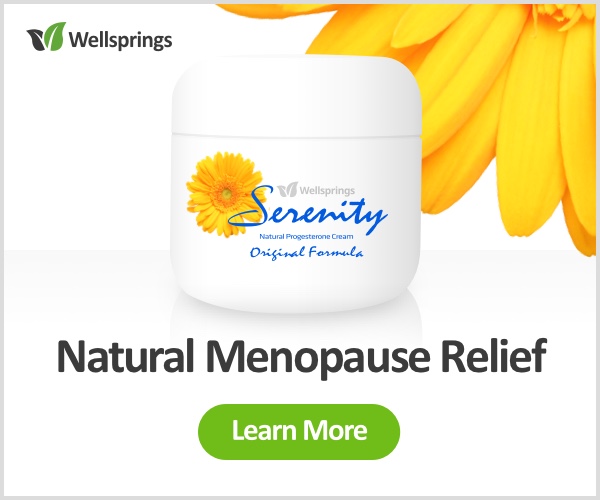Only When You Laugh?
It is not something we like to talk about, but many women at menopause do experience bladder weakness.

Are you noticing more ‘accidents’ when you laugh or sneeze? They can occur at any time and for different reasons and then bladder control can become a problem.
The 4 different types of common bladder problems
These are urinary incontinence, overactive bladder, urinary tract infections (UTI’s) and interstitial cystitis and affect well over 200 million people worldwide. Often, urinary incontinence is the only symptom that a problem exists—and it is a big problem that can be life-changing.
Incontinence issues
Although UTI’s and cystitis fall into this category, the greatest problem at menopause lies in with incontinence itself. This can be caused by many factors, and it is often a symptom of another bladder-related health problem.
Unfortunately urinary incontinence affects women far more often than men, especially during or after pregnancy and during or after menopause. The main types of incontinence are:
• Stress incontinence refers to the involuntary urine leakage during physical activity such as coughing, sneezing, laughing, bending over, getting out of a chair, lifting something heavy, or other exercise.
This is the most common type of urinary incontinence for women, particularly at menopause.
• Urge incontinence refers to a sudden, strong need to urinate, typically due to bladder muscle spasms or involuntary contractions. It may also be referred to as overactive or irritable bladder. With this type of incontinence, there is not enough time to get to the bathroom after feeling the need to urinate.
It can be caused by a diet high in bladder irritants including alcohol, coffee, tea, carbonated drinks, acidic beverages and chocolate.
• Overflow incontinence refers to a bladder that constantly dribbles, even with frequent urination. The bladder seems to constantly overflow because it does not empty properly, continually exceeding its capacity.
This type of incontinence is more common in men than in women.
• Mixed incontinence refers to a combination of the other types of urinary incontinence, and it is more common as we get older.
Incontinence can also be related to some medications, an adrenal insufficiency or hormone imbalance. Severe constipation can also affect bladder control by pushing against the bladder or obstructing flow.
Incontinence can also be caused by lifestyle factors including being overweight, consuming a lot of caffeine and/or alcohol, and smoking. For some people with incontinence, simply losing a few pounds, eliminating caffeine and alcohol, and stopping smoking resolves the issue.
The Urinary Tract
At menopause bladder problems are more common, but do you know the reasons why urinary tract health is important?
The purpose of the urinary tract is to process, store and expel urine from the body. With a healthy urinary tract and normal bladder function, the process is straightforward.
The kidneys filter blood to clean out waste and byproducts, producing urine, which travels through a pair of long tubes called the urethers into the bladder. As the bladder fills with urine, it stretches like a balloon.
With a healthy nervous system, most adults will begin to sense the bladder filling when the urine accumulates to just under a cup (approximately 200 mL), which is only about one-third to one-half of the bladder’s average capacity.
As the bladder continues to fill, the urge to urinate grows stronger.
When you intentionally urinate, the brain sends a series of nerve signals to simultaneously relax the pelvic floor muscles and contract other muscles surrounding the bladder to force the urine out through the urethra.
Keeping urine in also requires the coordination of multiple bladder sphincter muscles to prevent leaking, while also allowing the bladder to expand as it continues to fill.
Although the process is straightforward, controlling urination is more complex as it requires healthy muscles, a healthy nervous system, and a healthy urinary tract.
How to help yourself
The good news is that you can do quite a lot to help yourself with simple changes to diet and daily habits. Some of the things that can make a significant difference include:
• Maintaining a healthy weight. Unfortunately most women at menopause do tend to put on weight, but losing even just a few pounds may reduce or eliminate urinary incontinence.
• Reducing fluid intake is an obvious start, but we do need a regular intake of fluid for many bodily functions. The generally recommended minimum amount is 6-8 glasses of water a day, but limiting your intake so you do not have too much fluid in the evening will help avoid too many night time bathroom visits.
• Avoiding triggers that irritate the bladder such as caffeine, carbonated drinks – including sparking water, alcohol, acidic fruits and juices such as orange and grapefruit, spicy foods as all these can make the problem worse.
• Increase dietary fibre from food or supplements will help ensure regular bowel movements and avoid constipation. As previously mentioned, this can lead to incontinence or make it worse.
• Giving up smoking is good on many health grounds, but in this case it will help to reduce coughing and bladder irritation.
Lifestyle changes
Strange as it may seem, your bladder is influenced from your brain so retraining it will also make a real difference. A behaviour management approach includes:
• Keeping a journal to document fluid intake, trips to the bathroom, accidents or leaking, and level of activity.
• Timed bathroom visits to re-establish a pattern for urination, with gradual increases in the interval between going.
• Deep breathing, visualization and other diversion techniques to suppress bladder contractions and stretch the intervals between visits.
• Muscle training by strengthening the pelvic floor muscles can be helpful. There are a number of ways to do this from Pilates to pelvic toners designed to be used internally, but the most long-established are Kegel exercises.
These consist of repeated contraction and relaxation of the pelvic floor muscles, which are responsible for holding in urine. The simplest way to do this is first find the muscles you use to stop urinating. Squeeze these muscles for 3 seconds. Then relax for 3 seconds.
Add 1 second each week until you are able to squeeze for 10 seconds each time and repeat this exercise 10 to 15 times per session.
It is important that you don’t do Kegels while you urinate, but at other times throughout the day, and over a week or so should help with control over urine flow.
Hormone help
Progesterone cream may help reduce the need to urinate and allow for more uninterrupted sleep and oestrogen used vaginally has been shown to improve bladder and urinary tract tissue.
Depending on other symptoms, this could mean an oestrogen cream used vaginally together with a progesterone cream, or a combined progesterone and oestrogen cream.
More information:
This is a condition many women experience and if severe do speak to your doctor to see what help is available.
however, your diet to compare apart so this article will give you more information too.
https://anna.blog.wellsprings-health.com/food-and-drink-to-help-an-overactive-bladder/


















